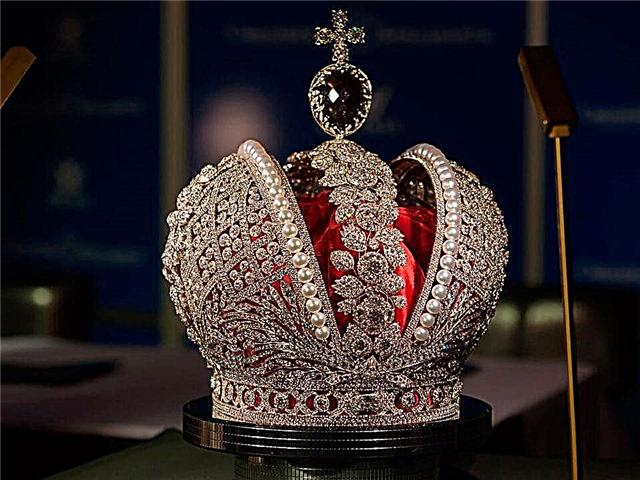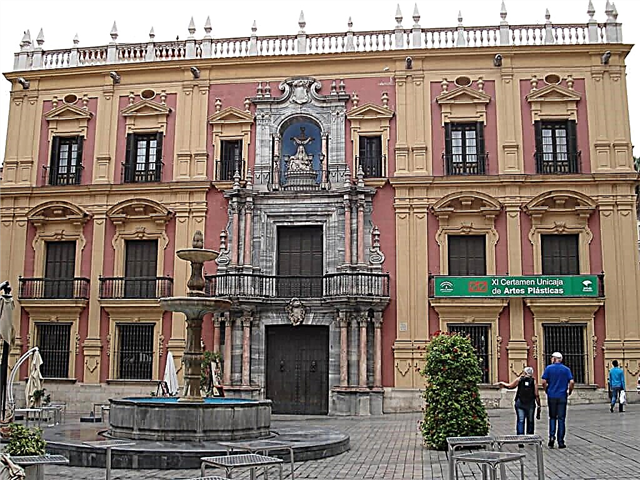Bright and festive Madrid attracts with the beauty of its streets, architectural monuments, ultra-modern buildings, parks and boulevards. One of the most beautiful places in the capital is Cibeles Square, which is invariably admired by numerous guests and proud of the locals.
History

King Philip II of the Habsburg dynasty (1556-1598) began to ennoble and develop the land around Madrid. The appearance of the Plaza de Cibeles, which is now the hallmark of Spain, dates back to 1570. Construction continued in the 18th century under King Carlos III - the territory was expanded and new structures were built. Plaza de Cibeles is a circle of almost regular shape, framed around the perimeter of buildings of amazing beauty.
This place was not initially so graceful and elegant, the aesthetic value was not thought of - it played the role of an administrative center with banks and offices. Business meetings were held here, contracts were concluded, and monetary transactions were carried out. People came to find out the news, to communicate with friends. Even the famous fountain, which now people come to admire from all countries, was used for practical purposes - it served as a source of clean water for the inhabitants of Madrid.
Sights
Plaza de Cibeles is located in the center of Madrid. On the territory there are historical buildings of complex architectural design, which are connected together by a fountain installed in the central part. Here are the palaces of Buenavista, Linares, Cibeles and the building of the Bank of Spain. The construction of the premises for the Bank began in 1884; the grand opening took place in 1891.
In the 20th century, the building was reconstructed - expanded, supplemented with graceful stained-glass windows, and a glass dome was installed. On the facade you can see portals decorated with stucco moldings, arched galleries. They say that directly from the Bank through an underground passage you can get into a secret room - a treasury where gold is hidden. In case of danger for the safety of valuables, the room is filled with water from the fountain.
Cibeles Palace

In 1918, a snow-white building was built in the art nouveau style, which was intended for the post office. The authors of the project were Joaquin Otamendi and Antonio Palacios. Majestic and graceful at the same time: with pilasters on the colonnade, openwork galleries, graceful turrets. The portal is decorated with the coats of arms of Spain and the seven provinces, surrounded by the apostles, and a round clock is mounted above the entrance. The interior is also richly decorated and has many original details in the decoration.
Interestingly, the name Cibeles appeared only in 2011, when the building began to belong to the city hall. In 1993, a significant renovation was carried out, led by the Bethlea architect Ayuzo Islandua. The inner part is divided into several departments, and not only office premises are located in them. A cultural center with a seating area with comfortable sofas has been organized, and free Wi-Fi is available.
The guests invariably like the exhibition, the main theme of the exposition is urbanism, in particular, of Madrid. Vernissages are held, a library works, a restaurant with excellent cuisine is open. The large space of the courtyard, where the post office used to be, is covered with a glass roof. Now it is used for entertainment events. If you go up to the roof, you will find yourself on the observation deck, located at an altitude of 60 meters, from which the city opens in all its glory.
Cibeles fountain

The popularity of the square is largely due to the famous fountain of the same name, installed in honor of the goddess Cybele. Built during the reign of King Charles III, who carried out significant reforms in urban planning. By order of the ruler, lighting was carried out, water pipes were installed, and the streets were paved with cobblestones. The project also includes the fountain in the Salon del Prado - a place for walks of Madrid citizens.
In the composition, the main person is the goddess Cybele (in the Spanish manner - Sibela), who personifies mother nature, is the patroness of agriculture and fertility. The goddess sits on a chariot drawn by a lion. According to legend, Hippomenus and Atalanta were turned into lions by Aphrodite for their disrespectful attitude. As punishment, they must drive the chariot forever.
Designed in 1777 by Venturo Rodriguez. The sculpture of the goddess and the chariot was made by Francisco Gutierrez, the lions were sculpted by Roberto Michel, the general design was by Miguel Jimenez. In 1782, the building was built and installed in another place, only at the end of the XIX century it was moved to the present one. Now the figure of the goddess, which is popularly called the "eternal bride", is surrounded by beautiful buildings, each of which is of value in the field of culture and history.
Linares Palace

Linares was built at the end of the 19th century in the New Baroque style. It is believed that in the past it was a terrible, lost place. During the people's liberation war, there was a prison built by the French, where they not only kept, but tortured and executed prisoners. The Marquis de Linares purchased this piece of land in 1872. In 1877, construction began on the structure designed by the architect Carlos Colubi.
The co-author of the project was Adolph Ombrecht, invited from France. Having recruited other talented craftsmen to work, they quickly built residential and numerous office premises. The building had both the features of a country villa and a city house. Stables and park pavilions were built here. They began to live in the house in 1884, but finishing work continued until 1900.
The basement of the 4-storey building housed storerooms and utility rooms, a kitchen, and rooms for servants. Above, there are ceremonial halls, living rooms, a library, a smoking room, a music salon, bedrooms, bathrooms - everything that must be in a rich house. On the top floor there is a guest room, a winter garden, a dining room, and offices.
The interior is decorated with tapestries made by the royal manufactory, Chinese silk and porcelain, palace halls - with embroideries and paintings by the most famous artists of that time. After the death of the Marquis, Linares was inherited by the Countess of Villapadierna. During the Civil War, the house was badly damaged and was prepared for demolition. Fortunately, this did not happen, because in 1976 the building was recognized as a historical monument, and by 1992 it was completely restored. Now the building houses a cultural center "America's House" to maintain ties with the peoples of Latin America, a museum and an art gallery.
Buenavista Palace

Another luxurious structure surrounded by French-style gardens. This is the Buenavista Palace - the first building on the square, it was built in 1777 by Juan Pedro Arnal for the Duchess of Cayetana de Alba, a representative of one of the most noble families of Spain, the great muse of Francisco Goya. The building is in brown tones, surrounded by an elegant metal fence. Today it houses the High Command of the Spanish Armed Forces.
For the inhabitants of Madrid, football is a national game, they love it and almost all are fans of the Real Madrid team. After the match, to celebrate success or defeat, they gathered in the square, where they sang, danced and bathed in the fountain. Once they damaged the statue of the goddess - tore off her hand. After that, the police strictly guard the monument, forbidding anyone to approach it.
Where is it located and how to get there

Plaza de Cibeles is located in Madrid, Spain. Located between Prado and De los Recoletos boulevards and Al street. It is convenient to get there by metro (line 2), the nearest station is Bank of Spain (Banko de Espana). By bus, take routes 1, 2, 14, 27, 146, 202, 522 to the stop Passeo del Prado and Plaza de Cibeles.
Exhibitions of the Cibeles Palace:
- work from Tuesday to Sunday, opening hours from 10:00 to 20:00, admission is free.
- The observation deck is open to the public from Tuesday to Sunday, admission is 2 euros, visitors are allowed in in groups every 30 minutes.
Madrid is beautiful at any time of the year or day. It is worth coming here and admiring the majestic monuments, palaces and cathedrals. Among them, the Cibeles Square is a masterpiece of architecture and the main attraction, without seeing which you lose a lot.
We recommend the following hotels in Madrid:











